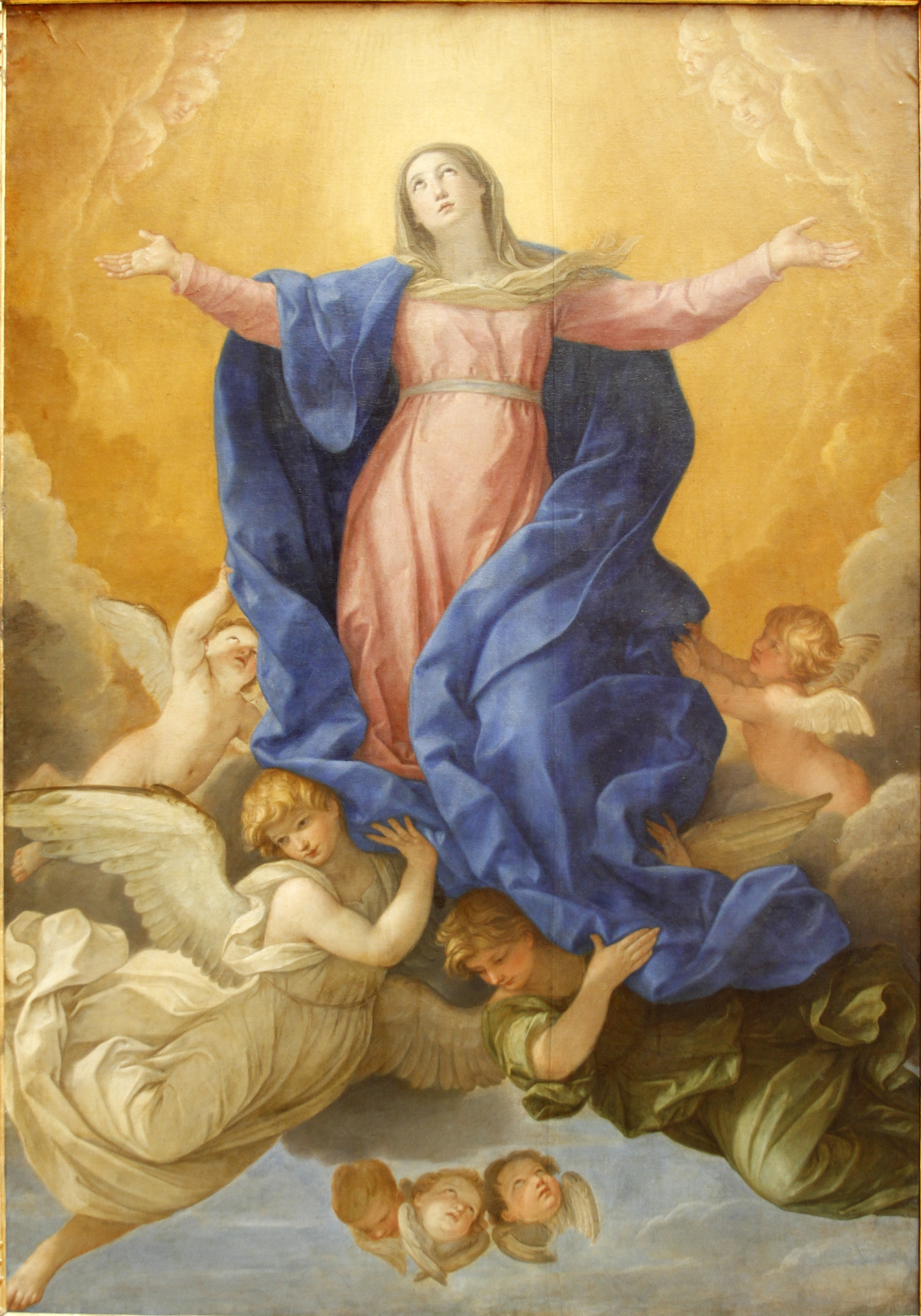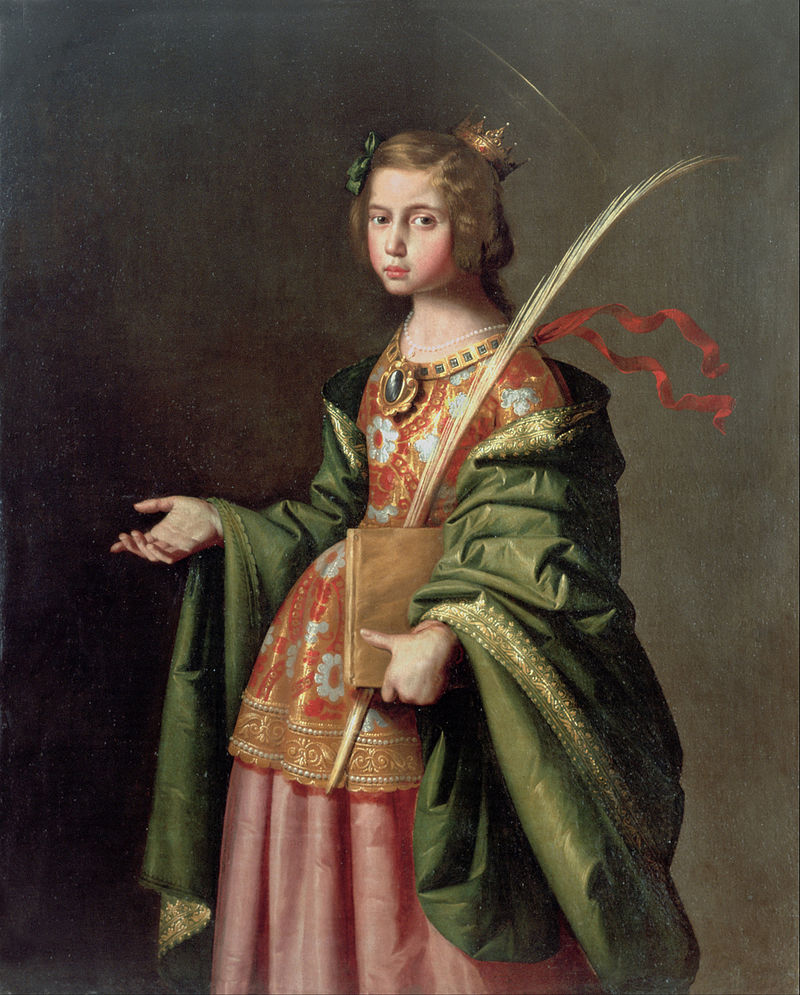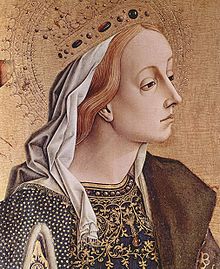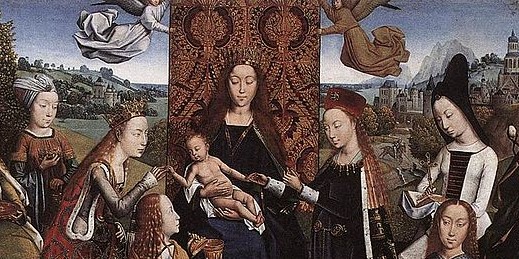When Christianity was established back in the day (I’m talking about the church fathers who established the church rather than that Jesus bloke who started the religion) a question was asked on how people could emulate Christ the way He had called them to. How could they be holy? The most obvious way was through martyrdom. Christ himself had been executed by his enemies and in the earliest days of the church, persecution was rife. Christians were arrested for worshipping in private, they were executed for refusing to make offerings to Roman Gods and baristas insisted on saying Happy Holidays. Later, when the church was established and persecution was less common, the road to sanctity became available through ‘confessing’. This had less to do with the confession of sins and more to do with ‘confessing Christ’ – the idea of furthering the church and converting the masses.
But what about women? Women could be martyred for their faith but did the church really want women going around preaching the gospel with the same authority as men? Seeing as they barely tolerate that now, it’s not likely. One or two to serve as examples would do, but they would be the exception rather than the rule. What then could women do to show themselves to be good Christians in a way that wouldn’t challenge the authority of men? The answer was tied up in sexuality and for a woman, the greatest thing she could do was maintain her virginity.

For medieval women, the early saints were role models. Their lives were told as inspirational tales in church and they were the heroines of the manuscripts of the day. Women were encouraged to emulate the examples of the virgin martyrs that had gone before them and live chastely, thus bringing them closer to God.
At some point, somebody probably realised that encouraging all women to be virgins was something of a mistake. On one hand, yay, sexual promiscuity was down (in theory at least) in a society that relied on primogeniture to determine their fortunes, on the other the human race would find itself cut rather short if all the women committed themselves to the cause of virginity. But, having determined that virginity was a woman’s way to holiness to disregard that idea might have women turning away from chastity and that would never do. They might even start to enjoy sex [audible gasp].
Instead, the definition of virginity was revised. Of course, it still retained its traditional meaning; a lack of sexual intercourse and that was preferable. But, virginity could also be a state of mind rather than a physical condition and thus was covered a multitude of sins. Literally.
The most obvious exemption would need to be for wives, after all, marriage was a sacrament in the Roman Catholic church and could not be considered legal until the couple had had sex. Such church-sanctioned relations couldn’t very well be considered a sin. But! Married women need not worry, assuming they did not commit adultery (a sin in itself) and limited their sexual activity to their husbands, they could still be considered virgins. Sex with a husband was allowed by the church therefore was no obstruction to a holy life and could still be considered virginal. A wife could gain bonus virgin points if she did not remarry after her husband’s death or for even more points, take the veil and become a nun. Such an act would cement her virginity, not quite as good as saving oneself altogether but permitted under church teaching nonetheless.
But wait! What about mothers? Mothers had obviously lost their virginity and had a living, breathing, miniature human to prove it. But if sex within marriage was to be permitted then sex within marriage to beget children would surely be allowed. The idea of a virgin mother needed to be treated with caution however given that the Virgin Mary occupied a very specific and unique place within the church, one that could not be occupied by anyone else, let alone an entire class of women. Therefore, a mother could be considered a virgin presuming she only had sex within her marriage and done her womanly duty by having children, but she could not be considered to have given birth as a virgin. At a glance, this is a weirdly specific distinction, but if you look at the Lives of male saints it takes on a new significance.

Examples include but are not limited to;
- Good Christian woman marries a Good Christian man and has sex once, falling pregnant with the saint in question and upon his birth taking a vow of chastity.
- Good Christian woman marries good Christian man and both take a vow of chastity upon marriage only to be compelled to have sex, just once, by an angel, so that the woman can fall pregnant.
- Good Christian woman is raped or has no knowledge of how she fell pregnant, thus preserving her virginity which was taken without her consent. And to make this even more disturbing, the man in question is written as having fulfilled God’s will, for only through forcing the woman could the saint be born. Good oh.
To further placate the women who wanted to remain chaste but had to get married for the sake of society, their marriage was framed as part of their Christian struggle. The virgin martyrs of the early church had to endure great persecution and torture to defend their chastity, so for wives and mothers marriage was something they had to endure. They were making a worthy and honourable sacrifice in enduring chaste marriages before they could live as the virgins they always intended to (assuming they outlived their husbands). Marriage was their torture and it might be a bit of a stretch but it was either that or all the women stopped getting married and lived as virgins.
The church had written itself into a corner and used their existing sanctioned roles for women to write themselves out of it. But where did that leave women beyond those roles? What about women who had had sex outside of marriage? What about the harlots and the whores? They were already sinners so they surely couldn’t ever be considered virginal? Or could they? [Dramatic fanfare] That’s right, not only did the church manage some impressive moral gymnastics to redefine prostitutes as virgins but they could even find precedent among their existing saints for it.
Several saints had lived apparently sinful lives in not just selling their bodies but enjoying it (how very dare they) but they too could be redeemed. Usually, they had some kind of religious experience that showed them the error of their ways and led them to instant repentance. Some were converted by hearing someone, usually a male saint, preaching. Some would find themselves unable to enter a church, frozen at the door, unable to physically move, sometimes with the accompanying voice of God telling them that they were not welcome in His house. In both instances, the women are overcome with remorse and immediately repent, usually by falling to their knees and crying out to the Lord to forgive them. Upon repenting they become virgins once more seeing as they’d never actually had sex as Christians. They were now committed to a life of chastity and often going one step further by exiling themselves or living as hermits in the desert, repenting for their promiscuity. As an aside, the most famous of this class of saint was Mary of Egypt and the confusion of this Mary with another famous Mary in the Bible is one theory as to how Mary Magdalene became known as a prostitute.
I’ve already said that sex was seen as something for the pagans and some of the virgin saints were often sent to brothels before their execution to corrupt them. However, pagan women were also used to try and seduce male saints on occasion. Sexuality was barely a footnote in the Lives of male saints, but on the odd and very rare occasion, the pagan governors would attempt to corrupt male Christians with the fairer sex. While locked away, beautiful women would be sent in to seduce them, though of course, they would stalwartly refuse. In the case of Saint Crisaunt, God himself prevented the five pagan women sent to deflower him from succeeding. All five of them fell asleep and it fell to Saint Daria, the most prestigious of Vestal virgins, arrayed in her finest clothes to Crisaunt. He didn’t sleep with her either, instead, he berated her choice of clothes, the pride she took in her appearance and they ended up having a philosophical debate over whose God was greater. In the end, Daria was converted and the two married so they could pretend to have had sex while actually living chastely and devoting themselves to God. At least until they were thrown into a pit and stoned to death for their heresy.

If you’d like to join me for more fun and games in picking apart history, and other behind the scene tangents, you can support me via my Patreon.













